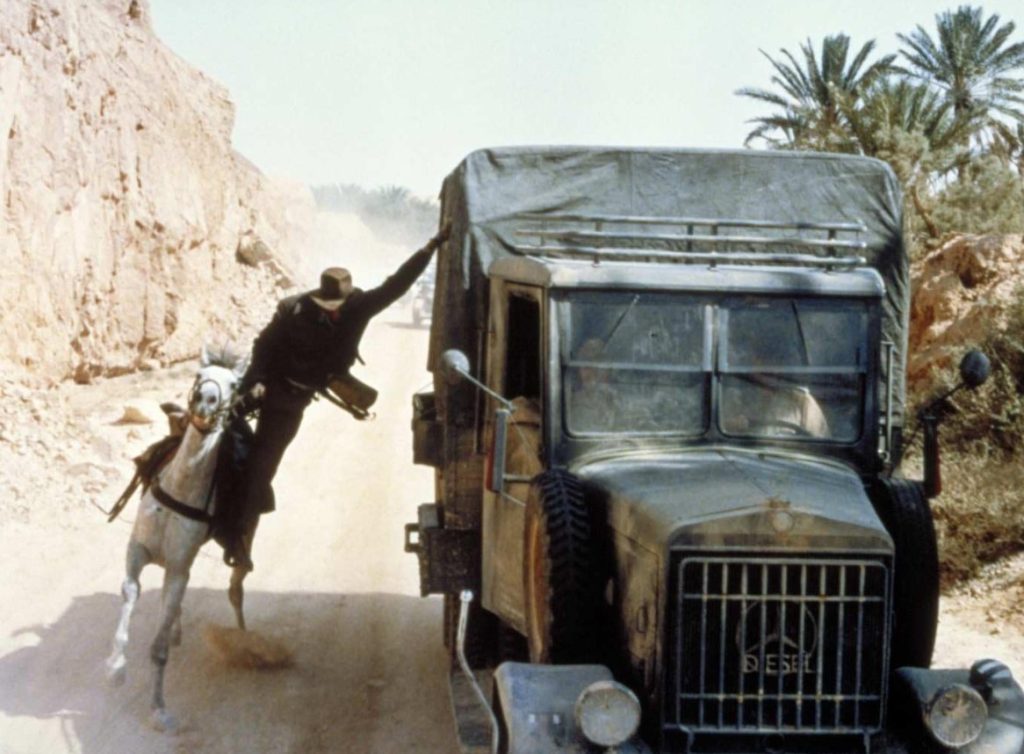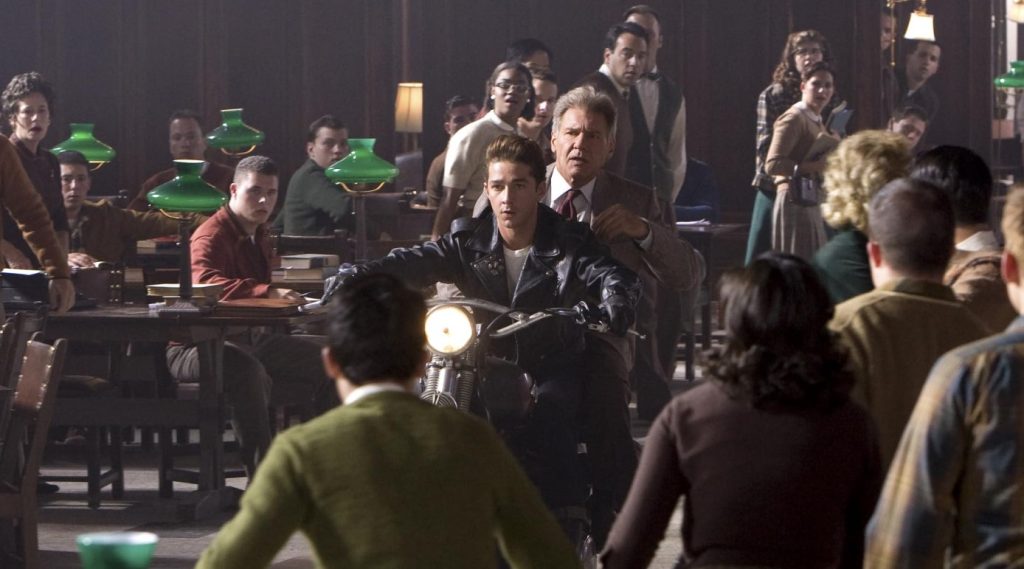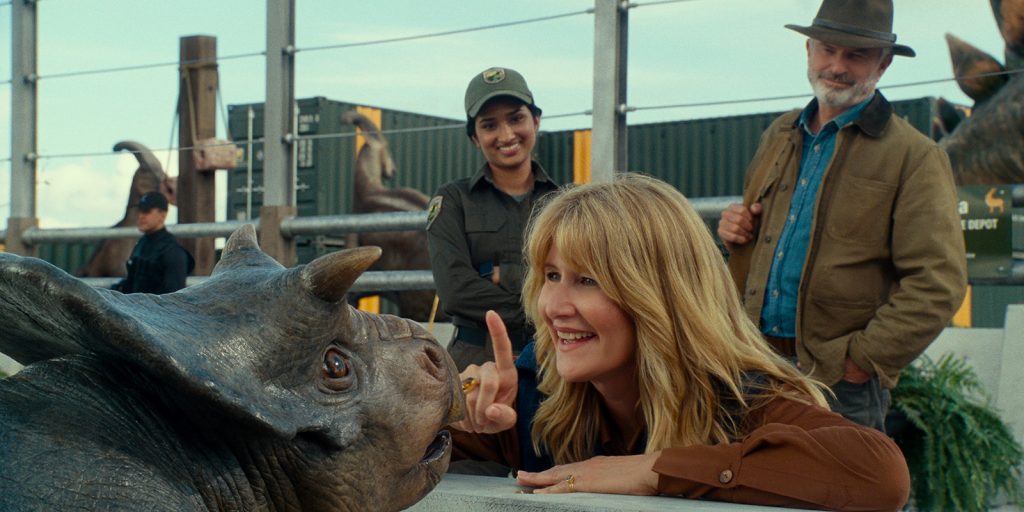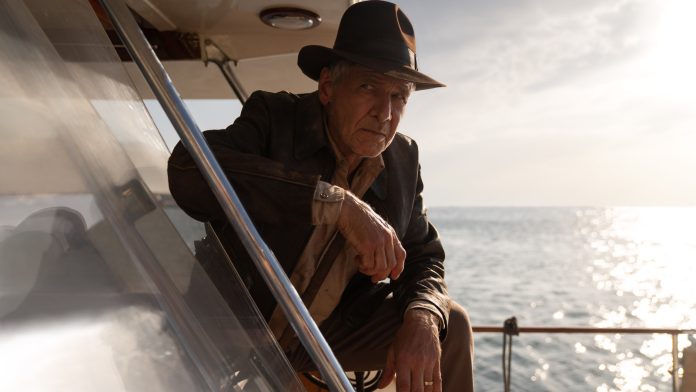Indiana Jones has hung up his hat for the final time, and thus closes the book on a legendary cinematic era. Though his final outing has been met with varying success, the character’s franchise did more for cinema than many realise, championing practical effects on the silver screen for over 40 years.
From filming in Sri Lanka on a rope-bridge constructed across a 300-foot-deep gorge river in The Temple of Doom, to building a replica of a World War I tank in The Last Crusade, the creators of Indiana Jones rarely stopped short in the face of a challenge. Indeed, the original trilogy is a shining example of creatively designed practical effects before the advent of modern CGI.
Practical Effects In Indiana Jones
Harrison Ford’s Indiana first rushed into cinemas in 1981 with Raiders of the Lost Ark, becoming an instant, indisputable classic. It was reminiscent of a time before, when innocent adventure serials were all the rage. And what do we remember most, other than Ford’s charm? We remember the stunning action set pieces: the truck chase; the fiery bar brawl; and of course, the rolling boulder scene. The effects used in all three films were practical, with director Steven Spielberg using imaginative ways to get around the use of CGI. Watching the film now it’s clear that these effects have remained highly relevant and exciting.
Something arguably even more challenging was the face-melting scene at the film’s climax. The nightmarish scene was made possible by carving a stone skull that could withstand the heat whilst using gelatin for the melting. We were faced with a similarly horrifying scene in The Last Crusade with the rapid ageing of character—practical effects which have undeniably stood the test of time.
What many viewers love about the original trilogy was their rough-around-the-edges look. This can partly be attributed to how everything was captured on film—giving it a grainy quality. But there’s something about watching a scene that’s been shot practically that gives it real stakes within the story. It helps audiences empathise with the protagonist. When watching a suspenseful scene constructed almost entirely from CGI, viewers will rarely bat an eye, but when it’s done practically we feel the danger.

In today’s releases, audiences are used to shiny, polished sequences, but there is a certain undeniable charm to older, more unrefined pieces of cinema. They ooze personality—something which can be lost in newer CGI-heavy adventures. This is part of the reason the last two instalments of Indiana Jones failed in the eyes of critics and viewers alike.
A World of VFX and CGI
Computer-generated imagery has been around since the 1960s, first used in Alfred Hitchcock’s Vertigo, so it was commonplace by the time Indy first came along. Yet, Raiders, Temple, and Crusade all avoided the use of VFX where possible, which is part of the reason they have been immortalised as the golden trilogy 30 years on.
It was the fourth instalment of the series that served as a slap in the face to all the fantastic work prior. Indiana Jones and the Kingdom of the Crystal Skull, released in 2008, was the first film in the franchise to experiment more heavily with CGI—spelling bad news for its reception. Now widely regarded as the movie that destroyed Indiana Jones, Crystal Skull is seen as the black sheep of the series, slammed for its overuse of CGI and VFX.
Watch the first 30 seconds. A staple for the series is the fading from the Paramount mountain logo to a shot of a real mountain. In Crystal Skull however, the shot dissolves into a shot of a mound of soil which is immediately disturbed by an animated gopher. It wasn’t that the effects were bad, but the problem lay with immersion. VFX is meant to enhance what was originally shot and ground it in reality around real actors and locations. The gopher looks fake and immediately removes the audience’s suspension of disbelief, detracting from the verisimilitude of the film. Perhaps it was a warning of things to come…
The cartoonish effects gave us scenes such as Shia LaBeouf’s ever-ridiculous Tarzan-swinging alongside CGI apes. Compare this directly with the practically-executed motorcycle chase through the library just 47 minutes earlier and it becomes evident that practical effects should always be favoured for the immersion they offer to audiences. A film should be enhanced by CGI, not rely on it as a crutch.

Dial of Destiny
This brings us to the latest and final edition: Indiana Jones and the Dial of Destiny, which hit cinemas at the end of last month. Director, James Mangold – who took over from Spielberg and has previously been at the helm of projects such as Logan – wanted to retain the commitment to practical effects as much as possible. Whether this was to honour the original trilogy, the previous director, or to break from the current mould—this was his priority.
In either case, it demonstrates that Mangold understands what makes Indiana Jones films special. Mangold deemed the de-aging of Ford as a suitable work-around for a plot he considered vital, but avoided these effects elsewhere.
Dial of Destiny was filmed on location in Morocco, Sicily, and the UK, providing real-world backdrops for our hero. The production team constructed large sets to give us the train sequence in Germany, the horseback pursuit in New York, and the tuk-tuk chase in Tangier. Mangold managed to avoid using ‘The Volume’: the combination of a physical set; LED panels; and digital elements. This was used extensively in the first few seasons of The Mandalorian and in Matt Reeves’ The Batman.
Production designer Adam Stockhausen told Disney: “I think that is core to what makes these movies special. Being in a place brings all the authenticity of the real thing, and it brings all the surprises of being able to twist and turn around corners that you wouldn’t have imagined to build into a set.”
Meanwhile, Ford added: “You want to feel these places, you want to smell them, as it were. And so, we want as much as possible to have practical sets, practical locations where there’s a different culture, where there’s a different feeling to the place.”
Looking Ahead
With the ending of this fabled franchise—at least for Ford—comes the possible ending of this era of practical effects and dedication to physical craft. Though we may occasionally receive a nod back to the ways of old, technology will continue evolving and so will our attitudes towards it.
More widely, the case for CGI is being made. These days, the unfortunate truth is that practical effects are much more difficult to achieve due to costs, with CGI becoming ever-cheaper and more accessible.
Yet there are still actors and directors fighting to stay true to what is now considered an ancient method of storytelling. Tom Cruise immediately comes to mind as he continues to push the boundaries of practical effects in his Mission Impossible series. Meanwhile, Christopher Nolan’s highly anticipated Oppenheimer initiates real explosions—a move which has so far garnered great publicity.

We can only hope that filmmakers continue to strive at executing their films practically. Though CGI has the potential to be spellbinding, as seen in classics such as Jurassic Park—it’s how it’s used that’s important. The magic of CGI was new and exciting because audiences had never seen the likes of it before. However, at a time when CGI is becoming all-too common, practical effects prove themselves everlasting. Perhaps we’ll see a return to form as audiences continue to be exposed to the mind-numbing effects of CGI—and I hope we do. Everything comes back around, especially when it evokes sentiment and nostalgia.
For the time being however, a scene from CGI-heavy Jurassic World encapsulates the current landscape. In what could be seen as a respectful homage to the declining era of practical effects, two characters are faced with a practically-built, mortally-wounded dinosaur, and watch as it takes its last breath—a metaphor for the passing of the torch?
Goodbye practical effects, hello CGI.
Words by Gemma Nettle
Support The Indiependent
We’re trying to raise £200 a month to help cover our operational costs. This includes our ‘Writer of the Month’ awards, where we recognise the amazing work produced by our contributor team. If you’ve enjoyed reading our site, we’d really appreciate it if you could donate to The Indiependent. Whether you can give £1 or £10, you’d be making a huge difference to our small team.
